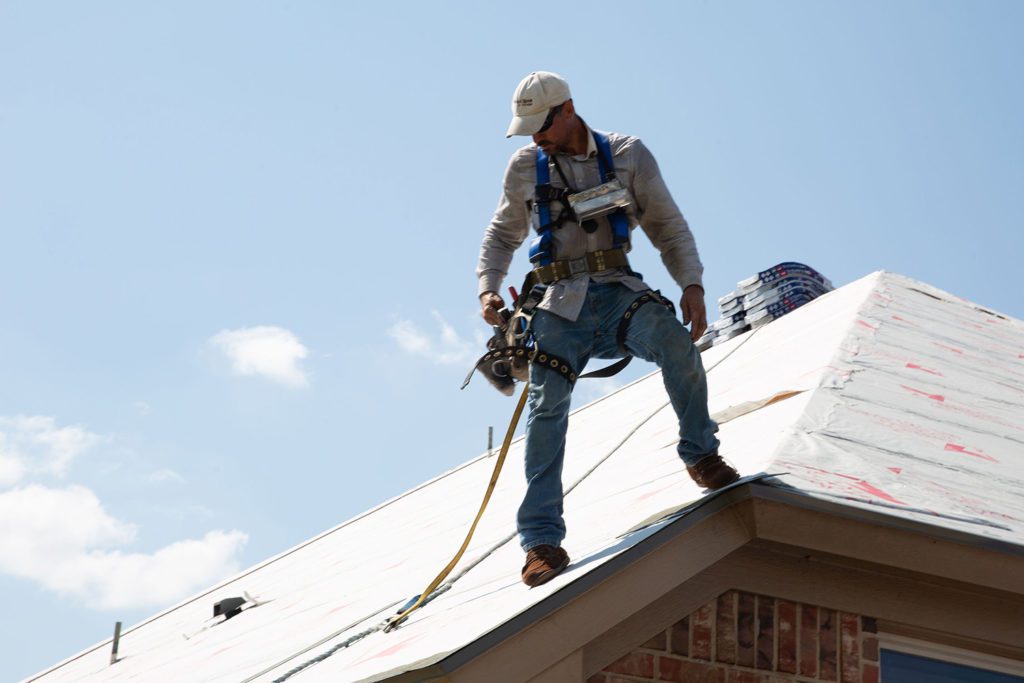Top Roofing Problems to Take Care of

The majority of individuals do not consider their roofs until there are a problem that requires quick attention. During the summer, when humid weather, intense sunlight, storms, and various pests become possible difficulties, roofs are especially vulnerable to damage. Understanding how summer roofing problems occur and taking preventative steps against them is the most efficient method to solve them.
Some frequent summer roof issues can be resolved on your own, but in other circumstances, you’ll need to hire a professional roofer to inspect and repair your roof. Here are the top roofing problems to check for in the summer to assist you understand how to safeguard your roof as recommended by roofing companies.
Damage from the Sun
Summer days are wonderful for spending time outside, but the direct sunlight can cause damage to your roof. Long-term exposure to the sun can cause fading and degeneration of your roof, as well as damage to the adhesives that keep it in place. Strong ultraviolet (UV) light can cause substantial harm to the materials on your roof, including plastics, woods, and asphalt shingles, just as it can to your skin. Summer has less atmospheric hindrance than any other season, therefore UV rays from the sun can cause harm even on cloudy days.Warping, fading, chipping, and other abnormalities in the roofing materials are all signs of solar damage.
Humidity and moisture levels
Another major cause of summer roof problems is hot, humid weather, which is exacerbated by poor attic ventilation. In excessive humidity, moisture can quickly build up, degrade your roof, and accelerate rotting of the materials if you don’t have proper ventilation. If parts of your roof are constructed of wood, they will absorb moisture quickly, suffer damage from swelling and shrinking, and eventually rot. Excessive moisture in your roof can lead to leakage and structural damage over time. Mold thrives in poorly ventilated, wet areas, which can lead to more damage and allergy problems.
Heat Injuries
If your roof isn’t shaded by trees or other structures, damage from the light and heat will begin to accumulate. Dark roofing materials, such as asphalt shingles, absorb a lot of heat, which causes them to break down due to fast expansion during the day and contraction when the temperature drops. These procedures may jeopardize your roof’s structural integrity.
Heat damage can also be caused by other materials. Metal components may bend, causing gaps in your roof. During summer rainstorms, your roof’s flashing, which covers delicate components like joints and chimneys, might melt or crack, leaving you vulnerable to water damage. It’s vital to remember that days of extreme heat can do serious damage to your roof.
Water Injuries
Water damage is one of the most common causes of roof damage, and summer rains can exacerbate the situation quickly. Roof shingle damage, such as breaking, splitting, warping, or falling off, can eventually lead to leaks. Regularly inspect your roof for cracks and weak points to limit the risk of water damage, and consider hiring an expert to assess your roof. If necessary, you may want to hire a professional to add a waterproof layer.
Branches, leaves, and other debris on your roof may appear to be harmless, but they can cause water damage. When debris builds up in your gutters or on your low roofs, moisture is trapped, which can cause your home to deteriorate over time. Keep an eye out for leaves, which produce moisture as they decompose. This moisture can move throughout your roof shingles and cause water damage, even if it is not visible.
Storm-related Damage
Summer storms can damage your roof in a variety of ways. After every storm, inspect your roof for damage. Shingles can be broken or blown off your roof by strong winds. Storms can also damage your roof by colliding with tree branches and other debris.
Algae and Moss Growth
Moisture is frequently accompanied with the growth of moss and algae. Though a modest amount of moss or algae won’t harm your roof, large amounts will retain moisture and deteriorate the wooden materials. Moss growth can lift shingles and cause extra water damage, even if your roof is composed of metal or asphalt. Moss spreads as spores through the air, landing on your roof, and grows in wet weather. The longer it stays on your roof, the more difficult it is to remove, so get rid of it as soon as possible.
It may be time to call a professional if you see any issues with your roof, such as damp areas, leaks, cracked shingles, clogged gutters, or moss growth. All American Roofing in Tulsa has years of experience in commercial and residential roofing, and we take pride on our roofers’ unrivaled expertise and client service. To schedule a free inspection from our roofing company or learn more about our services, contact our staff today.







